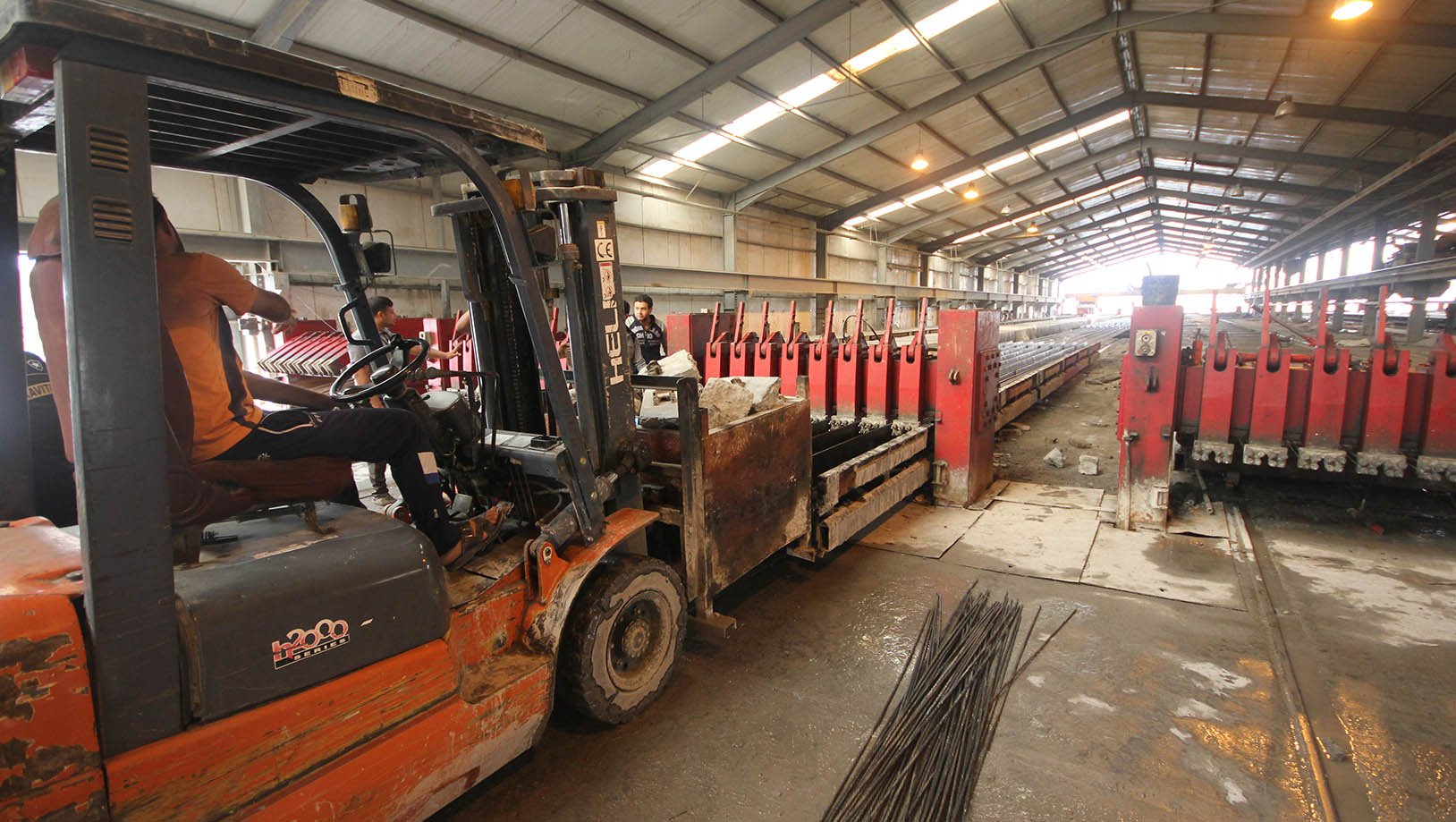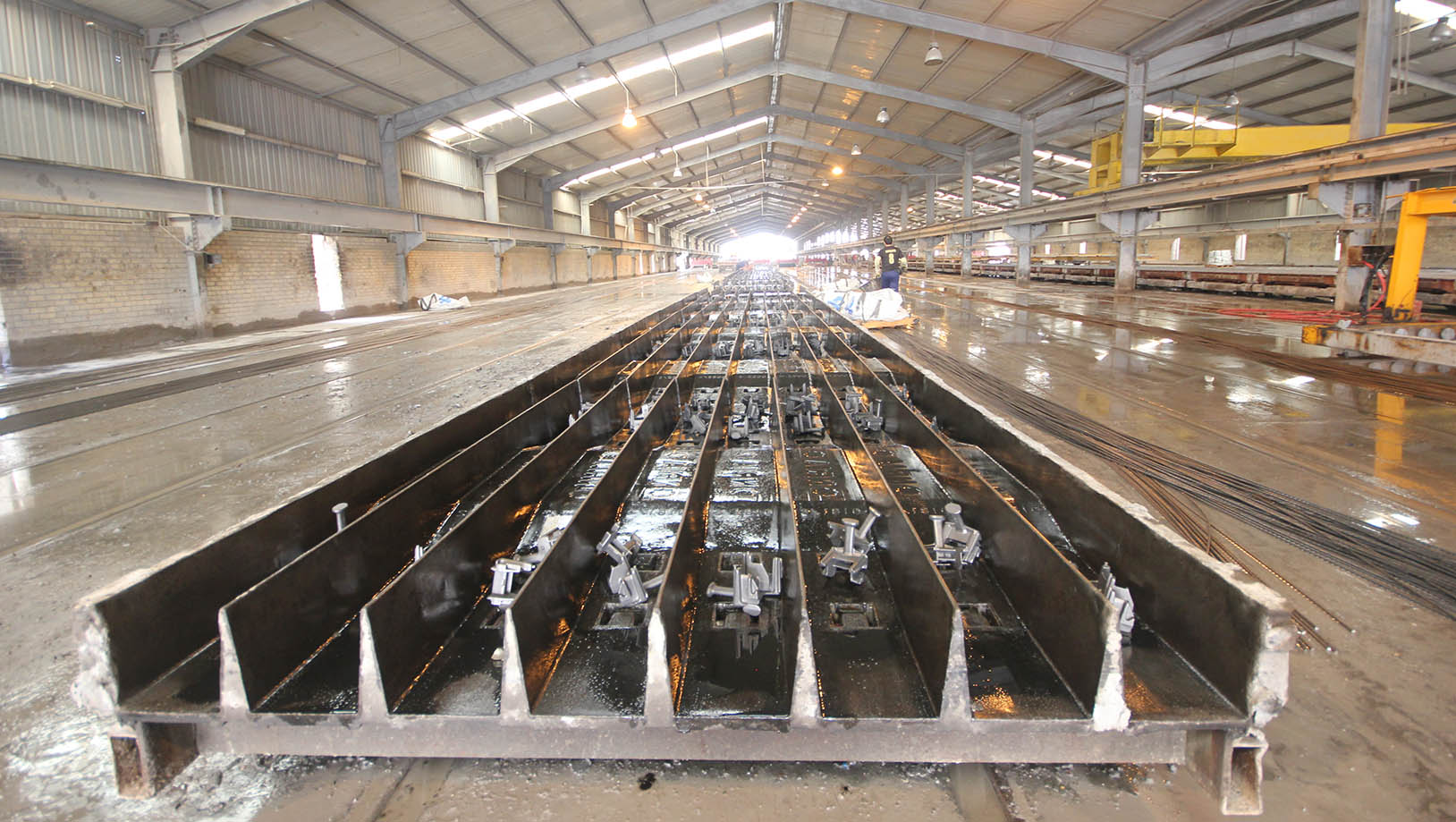Concrete Sleeper Factory
In 2004, Al-Burhan group started construction work on a Concrete Sleeper Factory in Abu Ghraib, outside Baghdad. This is one of Al-Burhan Group's largest and most ambitious projects to date. The factory was originally built in 1982 with the guidance of Dow-Mac (UK) who manufactured and installed the factory machines. After decades of neglect, Al-Burhan Group has undertaken the rehabilitation of the factory and brought it back to full production in October 2010. The factory is currently the sole supplier of the Iraqi Republic Railways with pre-stressed concrete sleepers for its railway network expansion programme.
Iraqi Republic Railways (IRR), founded in 1905, is the national rail operator in Iraq and since 2003 has embarked on the massive modernisation and expansion programme. As a result of this strategy there is an unprecedented demand for concrete sleepers Iraq providing Al-Burhan Group with an opportunity to assist in the rebuilding of the nation. The factory will produce railway sleepers exclusively for IRR built to custom and standard specifications alike. The factory is one of the highest capacity production facilities in the region aiming to produce over 2,800 concrete sleepers per day.
The IRR network consists of 1,905 km of standard gauge track with one international interchange with Chemins de Fer Syriens (CFS – Syrian national rail) at Rabiya. The network runs from Rabiya heading south towards Mosul, Bayji leading to Baghdad and eventually Basra in the south of the country. A branch line from Shouaiba Junction close to Basra carries freight to the sea ports of Khor Az Zubair and Umm Qasr. A second branch line head west from Baghdad via Ramadi and Haqlaniya to Al Qaim and Husayba. Another branch line connects Al-Qaim to Akashat and a final line provides a link between Haqlaniya (via Bayji) and Kirkuk running in an east-west direction.
The IRR network has successfully served the nation of Iraq for over a century; however heavy demands placed on it from passenger and cargo movements have created a dire need for modernisation and expansion. Since 2003, IRR has focused tirelessly on meeting these goals with an emphasis on expanding the network as quickly as possible to serve the needs of Iraq’s growing economy and population.
The aim is to quickly and efficiently rehabilitate existing rolling stock and railway lines while developing plans to add to the networks area of coverage through a series of enlargement programmes. These include the planned construction of a Baghdad Loop Line Railway system as well as the construction of a deep level mass-transit metro system for the capital. On a national scale, there are plans to add several branches to the main existing north-south line, in order to serve Iraq’s growing daily passenger and freight requirements.
As part of its operational strategy, IRR wishes to upgrade the network inline with international standards and expectations, therefore a multitude of partnerships and consortia are being formed between IRR and various global railway companies. These working relationships will allow IRR to take advantage of international technology and expertise in order to serve the massive current and projected demand on the national railway network.


















